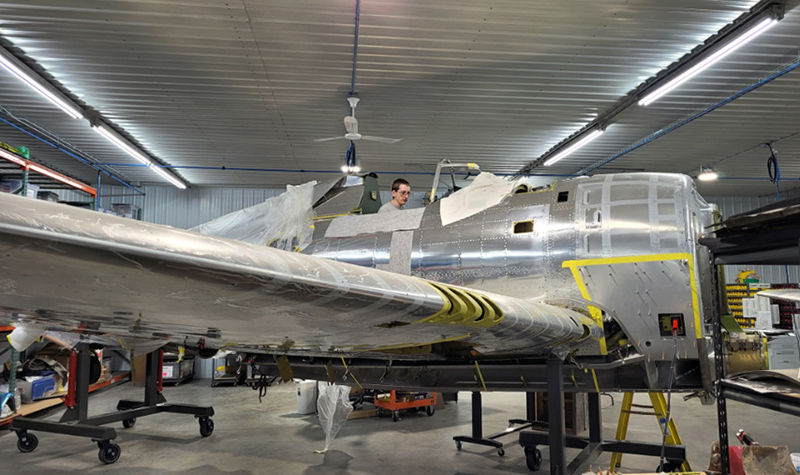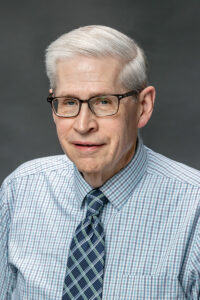Boxer, UND graduate, fighter pilot – and ‘a good man’: The Cully Ekstrom story
Veterans Day tribute to Carl ‘Cully’ Ekstrom, a UND graduate who gave his life for his country during World War II

Vicki Thomson has been amazed throughout her life that so many people have kept alive the memory of a father she barely knew – a World War II military veteran killed in action whom they didn’t know at all.
“We should remember what people have done to try to build and to protect things that make life good,” she said. “If you don’t do that and have a memory of something to reach for, what is there? It was important enough for people to die for, and I think sometimes that’s forgotten.”
Her father, Capt. Carl “Cully” Ekstrom, was a University of North Dakota graduate who died on Dec. 30, 1943, while flying a combat mission over France. He was born in Minneapolis and came to UND on a boxing scholarship. Ekstrom won the National Collegiate Featherweight Golden Gloves championship in 1937; he was posthumously enshrined in the UND Athletic Hall of Fame in 1983. He graduated from the University in 1941 with an education degree and then joined the U.S. Army Air Force to become a pilot.

Now 83 and living with her husband, Jeff, in Sonoma, Calif., Thomson was only 5 when the Army Air Force sent her mother, Myrtle, a telegram saying that her father hadn’t returned from his 51st mission. He’d led a flight of four P-47D Thunderbolts with the 355th Fighter Group from their base in Steeple Morden, England. Only one of the planes returned.
Historical preservation

Eric Trueblood, a Minot native, a 2006 UND graduate and a 2017 Sioux Award winner, is in the business of preserving history and memories. As senior vice president of sales and marketing with AirCorps Aviation, he was co-founder of the Bemidji, Minn., company that’s gained a worldwide reputation for immaculately restoring World War II aircraft to flying condition.
“There’s a lot of motivation to honor not just the people who flew the airplanes we’re restoring, but all of our veterans who were abroad and stateside during the war,” he explained. “The airplane serves as a mechanism to further the story.”
In January 2019, Trueblood was in France to secure a P-51 Mustang for restoration with Erik Hokuf, AirCorps Aviation’s general manager, and Warren Pietsch, a warbird pilot and restorer with the Dakota Territory Air Museum in Minot. On a snowy day that kept most traffic off the road, the group decided to travel from Paris to visit the Normandy American Cemetery where 9,386 U.S. service members are interred.
“It’s an emotional and immersive experience when you walk in,” Trueblood remembered. “They had a computer where you could look up internees. You can search by name, serial number and state. Being proud of our state and being there with a fellow North Dakotan, I typed in ‘North Dakota.’ The first name that came up was Cully Ekstrom.”
As fate would have it, AirCorps Aviation was in the process of restoring a P-47D from the Pacific Theater of World War II that’s very similar to the plane Ekstrom flew. It’s referred to as the razorback version of the Thunderbolt because the aircraft has a spine extending down the fuselage from behind the pilot to the tail. Later models had a bubbletop canopy to give pilots a better all-around view.

When AirCorps Aviation completes the project sometime in May for the Dakota Territory Air Museum, it will be the world’s only flying version of the P-47D razorback, Trueblood said. He also hopes that one day he’ll have the opportunity to show Thomson the finished aircraft to honor her father’s sacrifice.
“I can only imagine how he would feel torn to be flying combat over there with a daughter he probably barely knew at home and desperately wanted to get to know,” he said. “He knew what he was fighting for, of course, but his sacrifice – among many sacrifices – is an important thing for all of us to remember and think about on Veterans Day.”
At the air base in England, Ekstrom hung a family portrait over the head of his bed showing the dashing young pilot in uniform with wife Myrtle and daughter Vicki at his side. The nose art on his aircraft wasn’t the usual scantily clad woman or insulting jab at the Nazis, but the Golden Gloves insignia from his boxing days at UND.
A good father
Thomson remembers fun times with her father – trips to the zoo or park – as the family moved around the U.S. to bases where he trained to be a pilot. She remembers her father telling her that going off to war was something he had to do, but he promised her he’d be back. She also remembers a letter he wrote when he was stationed in England.
“He said, ‘I’m flying the best airplane.’ He thought the P-47 was a very good airplane,” she recalled.

Thomson noted that the news of her father’s death came when she and her mother were living at her grandparents’ farm near Ryder, N.D. After the telegram, they received little information about what happened to Ekstrom.
“It was a hard time,” Thomson said. “There’s no question that it affected my mother for the rest of her life, but you just do what you have to do. She didn’t talk about it a lot or make a big deal to me. She just took care of me.”
Thomson and her mother moved to Portland, Ore., to live with Myrtle’s sister. There, they bought a house and Thomson’s mother and aunt got jobs. Although her father had a large family in Minnesota, her contact with them was limited after moving west.
“I do remember very vividly that my mother was contacted about where she wanted my father buried,” she said. “Her response was that people should be buried where they die. She could have brought him home, but the decision was made for that reason. They created the Normandy American Cemetery in France, and that’s where he’s buried.”
In 1996, Thomson visited the cemetery for a Memorial Day observance, an experience that changed her.
“I had thoughts of what was taking place in the world at that time and how people dealt with it,” she said. “They knew this was the right thing to do and they just did it without making a big fuss. My mother seemed to be the same. You don’t talk about these things a lot. You just do your job and get it done.”
But what she remembers most about the trip is how the people of France and England sincerely thanked her for her father’s service and sacrifice. She wasn’t prepared for their level of gratitude.
“I felt kind of special and like my father was special,” Thomson said. “What he did meant something to people.
“They were thanking me and I was surprised,” she continued. “But to some degree, I did lose something. I did not have a father, and I did not have someone to help me grow up.”
Bringing Ekstrom’s story to life
The desire to preserve her father’s memory has led to some unexpected connections. For example, renowned model-maker Frank Cronin – whose work has been displayed in museums – from San Bruno, Calif., built her a scale model P-47, an exact replica of Ekstrom’s plane. When it was damaged in a move, he built her another one.
Cronin wrote an article about the model of Ekstrom’s P-47 and posted it on the web with photos, which caught the attention of Steve Fenker, who now lives in Florida. Fenker’s uncle, Charles Wambier, was one of the three Thunderbolt pilots who died on the same mission as Ekstrom.
Not content with the sparse information the military provided on the fate of the pilots, Fenker thoroughly investigated the events and obtained the official reports detailing what happened on that fateful mission in 1943. He provided Thomson with the information he found.
While returning from bomber escort duty, Ekstrom’s flight was jumped by German fighters. Two American planes – including Wambier’s – were shot down. Ekstrom shot down one of the German fighters to earn his second kill of the war.

Low on fuel, Ekstrom and the one remaining P-47 headed for the English Channel, but came under anti-aircraft fire as they approached the French coast. Ekstrom went down to strafe the German guns, but was shot down in the process near the town of St. Inglevert.
As word spread about Thomson and her father, she was invited to attend a reunion of the 355th Fighter Group in Tucson, Ariz. There, she saw a restored, flying P-47 Thunderbolt up close and personal. She also met with a World War II veteran pilot from the group who knew her father.
Thomson has learned a great deal about the father by making connections with others willing to share what they knew, helping her understand the military aspect of her Ekstrom’s wartime service. But she knows her family and the country lost a good man on Dec. 30, 1943.
“My mother and father were very good together,” Thomson said. “Our family always thought very highly of him. He was a good person who always did what he said he was going to do. Everyone said Cully was like that.
“When he said something, he did it,” she remembered. “He told me, ‘I’ll be back. I promise I’ll be back.’ And I’m sure he was planning on that.”



